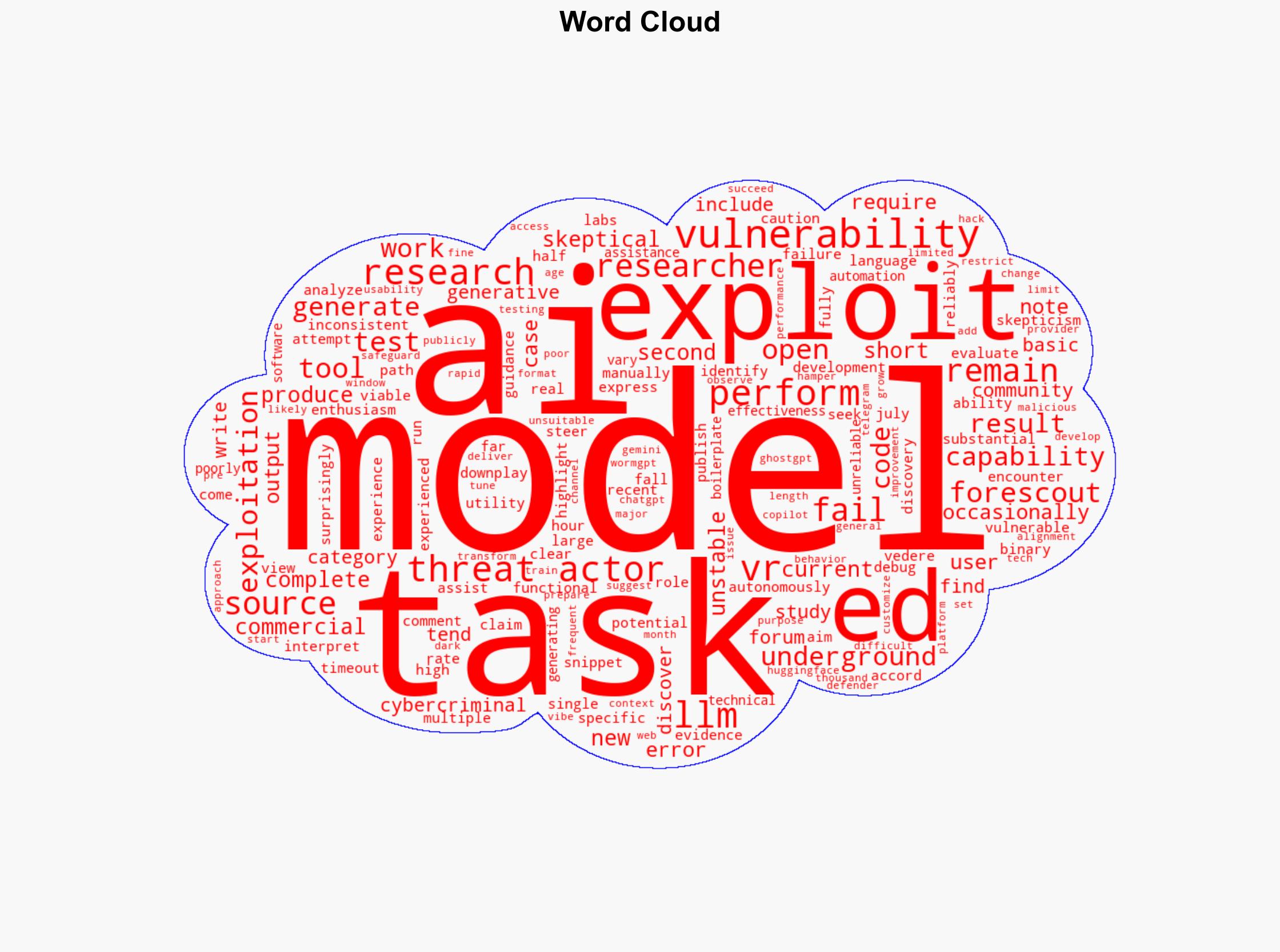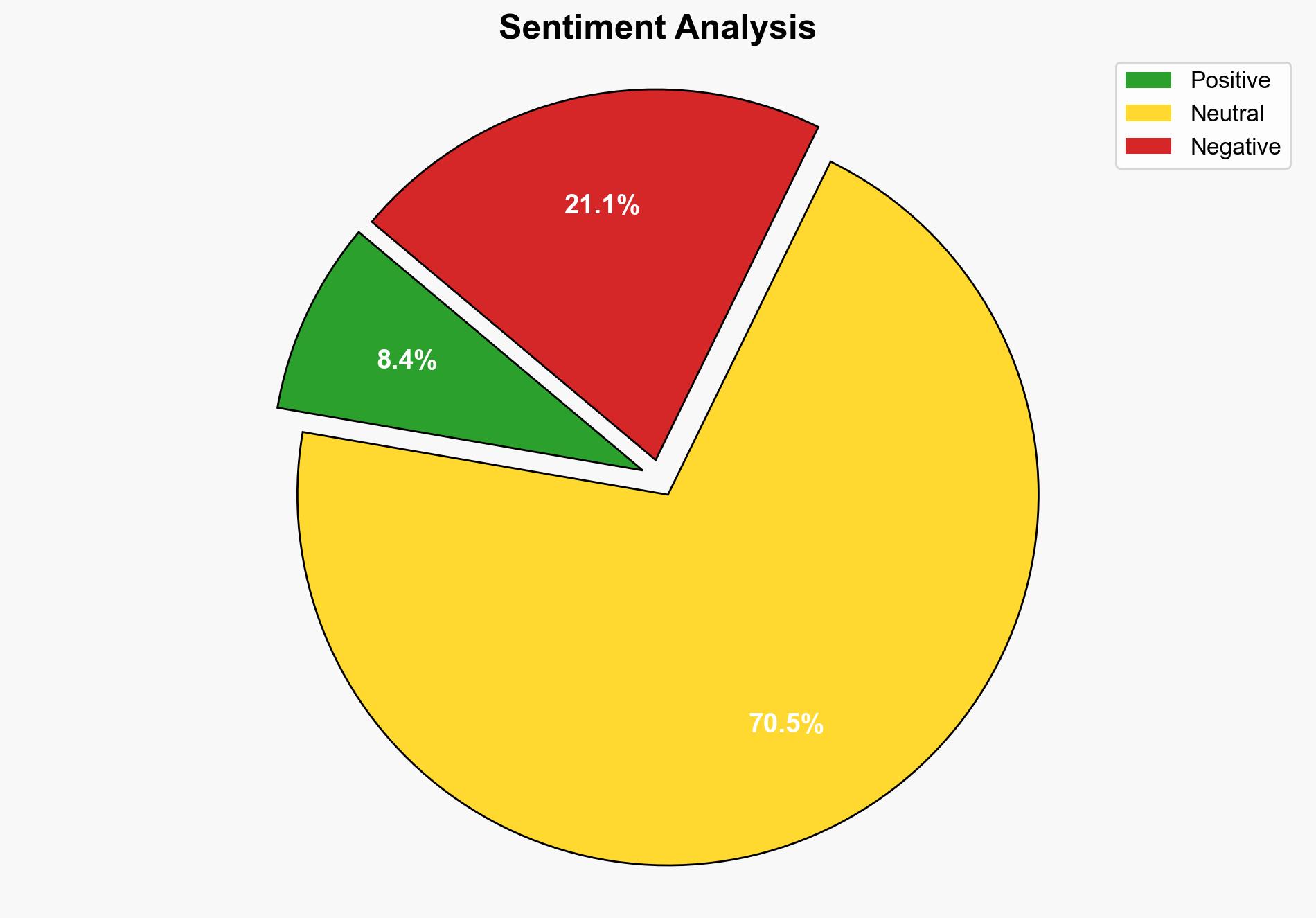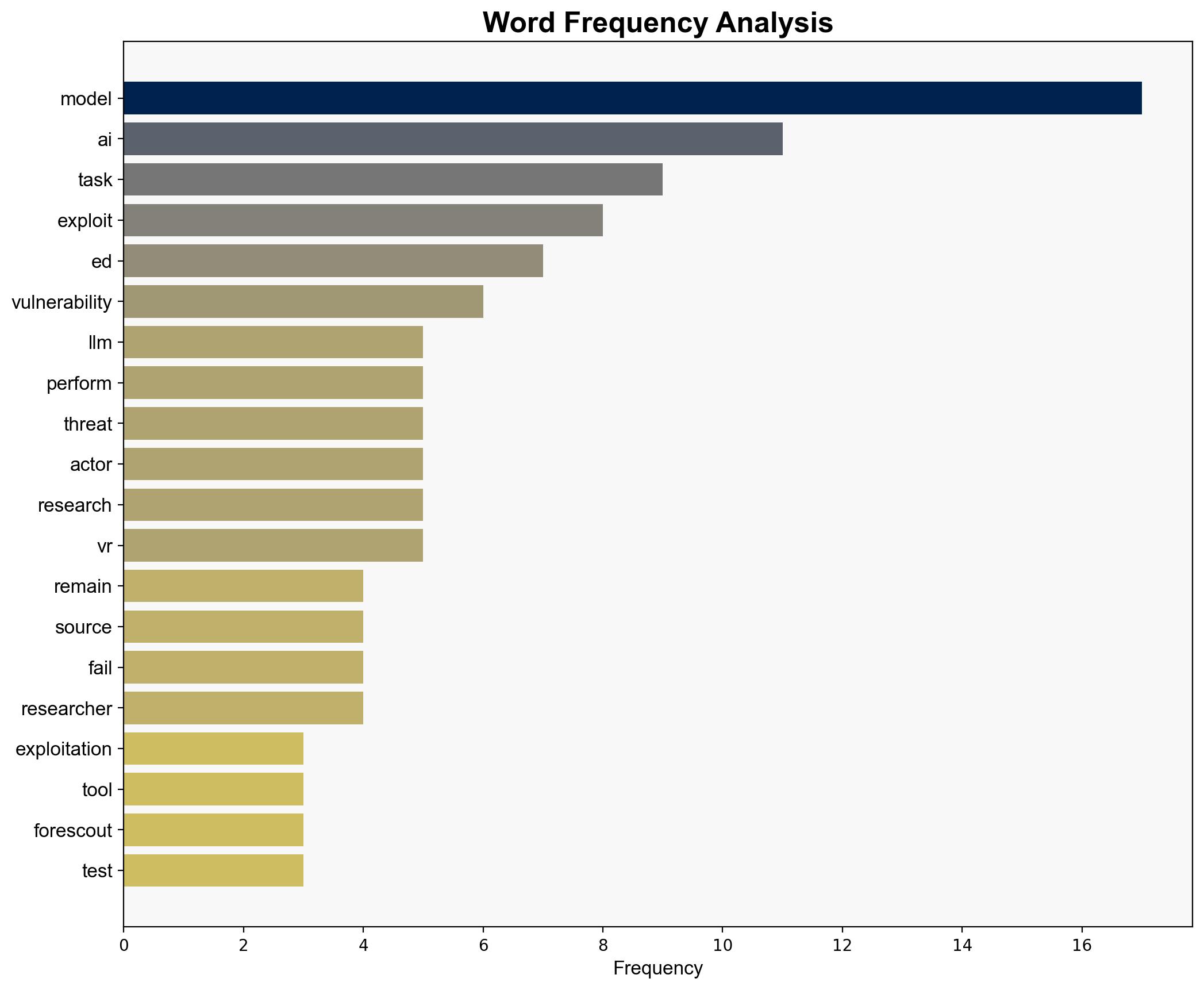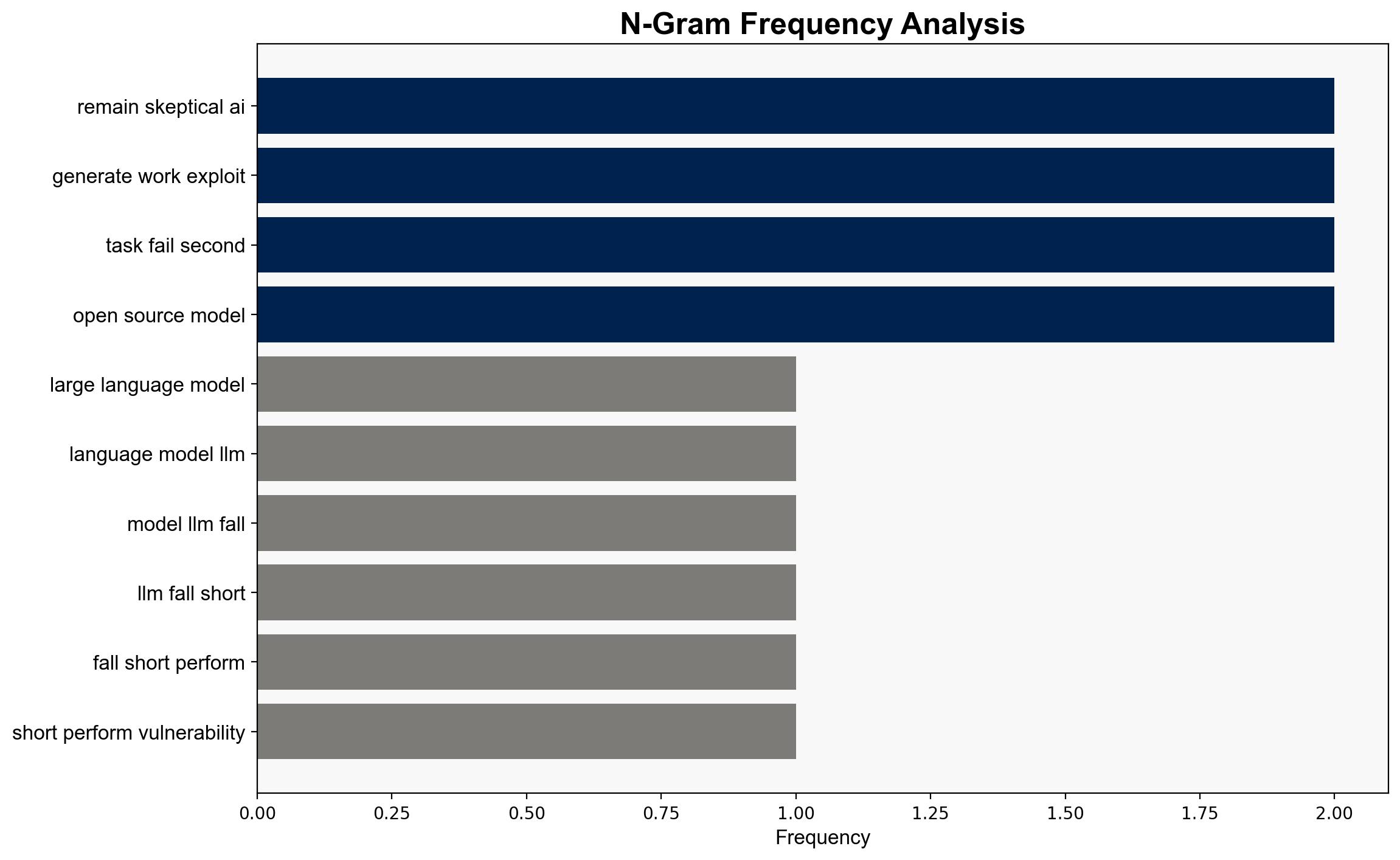LLMs Fall Short in Vulnerability Discovery and Exploitation – Infosecurity Magazine
Published on: 2025-07-10
Intelligence Report: LLMs Fall Short in Vulnerability Discovery and Exploitation – Infosecurity Magazine
1. BLUF (Bottom Line Up Front)
Large Language Models (LLMs) currently underperform in tasks related to vulnerability discovery and exploitation. Despite advancements, these AI tools face significant challenges in autonomously generating fully functional exploits. Cybercriminals remain skeptical of their utility, indicating that while LLMs can assist in basic tasks, they are not yet transformative in the cybersecurity domain. Strategic focus should remain on traditional cybersecurity measures such as network segmentation and zero trust architectures.
2. Detailed Analysis
The following structured analytic techniques have been applied to ensure methodological consistency:
Adversarial Threat Simulation
Simulations indicate that LLMs struggle to replicate the nuanced decision-making of skilled cyber adversaries, highlighting their current limitations in complex exploit development.
Indicators Development
LLMs show potential in generating boilerplate code and basic automation, which can be monitored as indicators of emerging threats, though their reliability remains inconsistent.
Bayesian Scenario Modeling
Probabilistic models suggest a low likelihood of LLMs autonomously discovering new vulnerabilities in the near term, with current capabilities focused on assisting rather than leading cyber operations.
Network Influence Mapping
Mapping of cybercriminal forums reveals a cautious approach towards AI, with experienced actors expressing skepticism about LLMs’ current capabilities.
3. Implications and Strategic Risks
The limited effectiveness of LLMs in vulnerability discovery poses minimal immediate risk of a paradigm shift in cyber threats. However, their rapid development trajectory necessitates ongoing monitoring. The potential for misuse in generating basic malicious code could increase low-level cyber threats. Strategic risks include over-reliance on AI for cybersecurity, potentially diverting resources from proven defensive measures.
4. Recommendations and Outlook
- Continue investment in traditional cybersecurity measures such as privilege management and network segmentation to mitigate current vulnerabilities.
- Monitor advancements in AI capabilities to anticipate future shifts in threat landscapes.
- Scenario-based projections suggest a best-case scenario of enhanced AI-assisted threat detection, a worst-case scenario of increased low-level threats, and a most likely scenario of gradual integration of AI tools in cybersecurity operations.
5. Key Individuals and Entities
No specific individuals are mentioned in the source text. The focus remains on the general skepticism within the cybercriminal community and the research findings from Forescout’s Vedere Labs.
6. Thematic Tags
national security threats, cybersecurity, AI in cyber operations, threat actor skepticism




